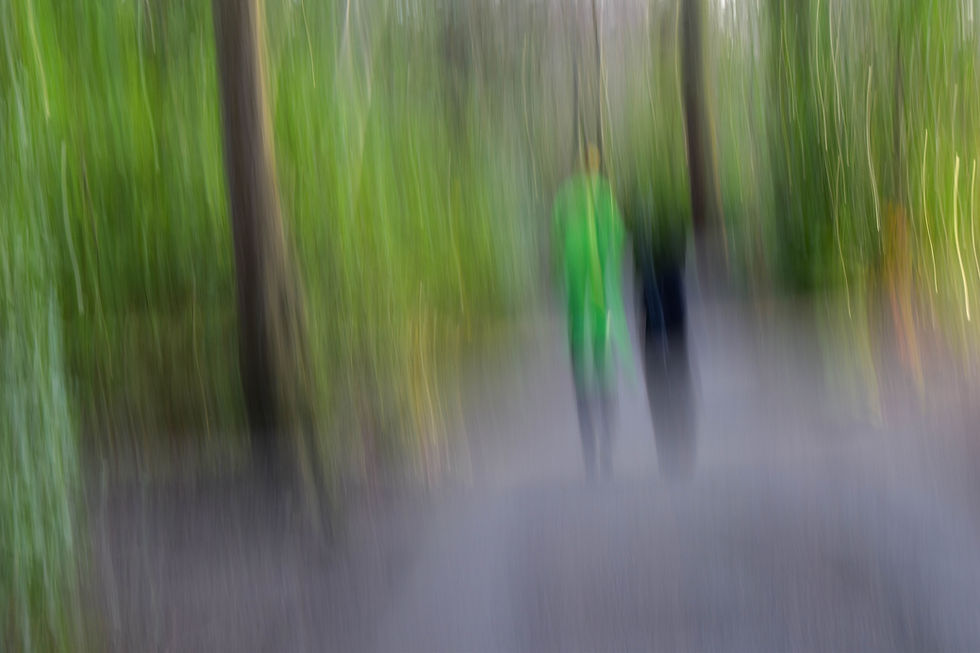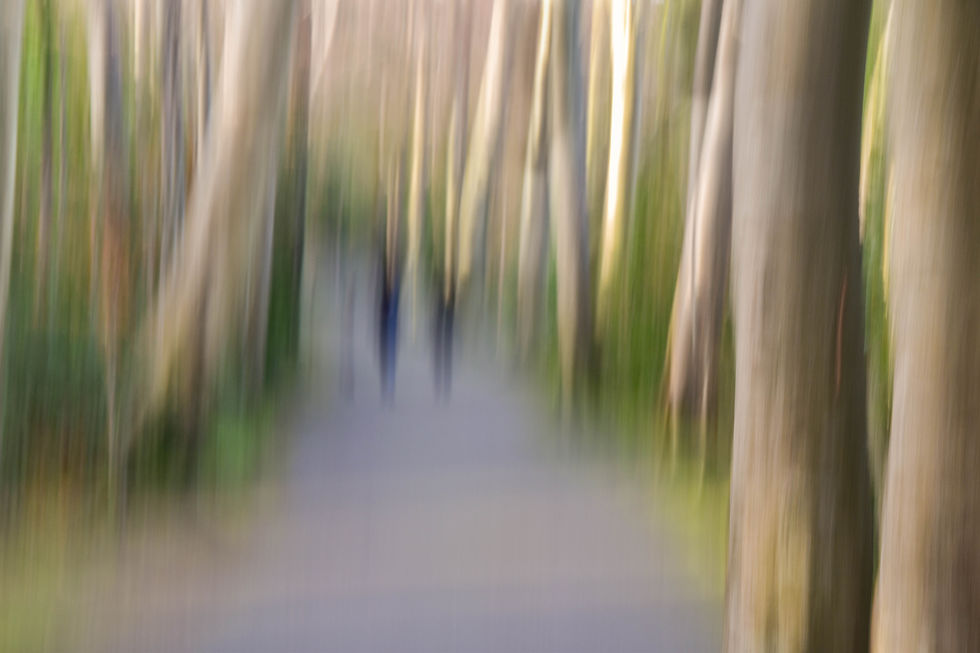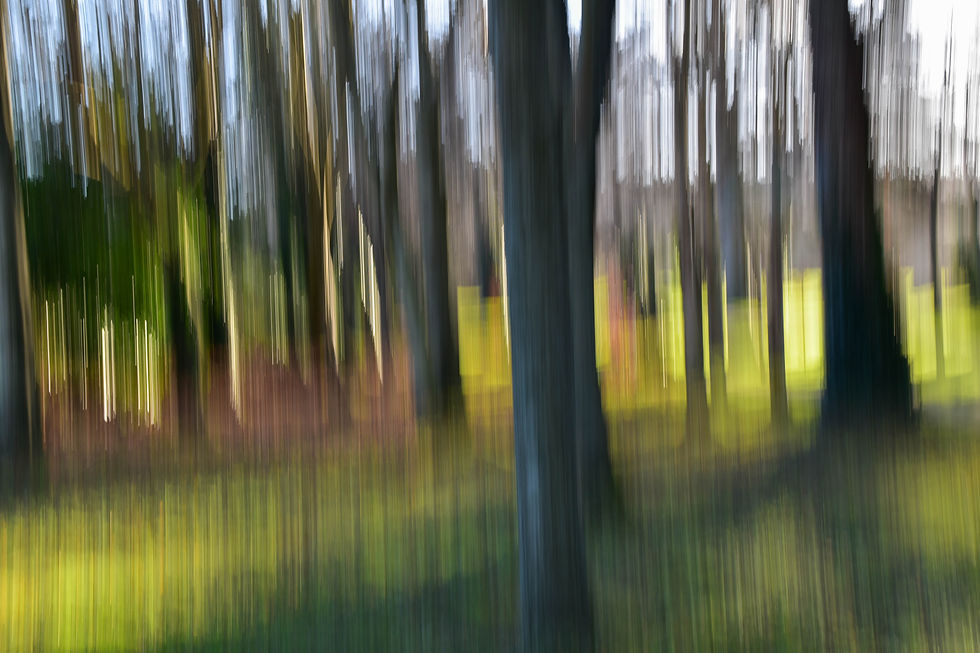Why I Have Grown to Love ICM Photography
- WildWillowWays
- Feb 4, 2024
- 4 min read

Intentional Camera Movement (ICM) as a technique in photography is not new but it does seem to have gained in popularity in recent years. No doubt digital technology is partly responsible for this popularity as it is relatively easy and inexpensive to take lots of shots, and this is a big part of doing ICM photography. ICM is about experimentation, trial and error, finding out what works through discovery and practise.
When I first tried ICM photography I gave up easily as I felt that my failure rate was too high. Yet I kept going back to ICM, taking a few ICM images each time I went out on a regular shoot, learning more about it from those who are experts in the field, and now I really enjoy this aspect of photography and my success rate is increasing all the time.
So, why have I grown to love ICM photography?
There are a few reasons, which I’ll outline in the hope that you might find inspiration to try some ICM photography for yourself.
#1. Each ICM image is unique. If you stand in the same spot as another photographer in standard photography, chances are that you will both end up with similar images. In ICM photography that is not the case. No two photographers will end up with anything that resembles the other’s image. In fact, if one photographer were to take two ICM images in quick succession, using the same settings, they would also look very different. The speed and quality of movements play a major role in ICM photography, and these are hard to repeat exactly, resulting in a unique image each time.
Obviously, unique does not always mean great but it does mean that when you produce an image that pleases you it will be unique to you and not likely to be replicated by anyone else.

This is one of many ICM images I have created in my local woodland. Sometimes I include people in the distance. Trees make great subjects for ICM and help us to produce endless variations of our images.
#2. ICM helps you to develop your creativity. While you can develop creatively in standard photography, ICM takes creativity a little further in that each image is a result of your creative vision. Since there are no rules in ICM there are no limits either to the artistic results you can produce.
There are a lot of different creative approaches in ICM photography and many photographers experiment with all of them at different times. Some opt for an impressionist, often painterly, result, where the subject or setting is recognisable to some extent. Others prefer a more abstract image, where a real setting has been transformed into an artistic blend of colours, shapes, swirls, spirals or waves. Most often in these images the original subject or scene is no longer recognisable.
Regardless of the results, the process involved in obtaining those results offers endless possibilities to get creative with your camera.

In this image, the camera movement over a patch of flowers created swirls that are no longer recognisable as flowers.


In both of the images above the subject is still recognisable.
#3. ICM gives you a great sense of satisfaction when you produce an image that you really like. ICM photography is challenging, and the results are often disappointing. This is one of the reasons why there is great satisfaction when you succeed in creating an image that works for you. When you have a vision for what you want to create, and you have to work hard to realise that vision, it is particularly satisfying when that vision comes to fruition in the form of a pleasing image.

For this image I had a vision that I wanted to create an ICM image of some people walking through a spooky woods. I found a suitable location then waited for the right subjects to walk into the scene. I particularly wanted some contrast in the clothes to match the background.
#4. ICM provides challenge and growth in photography. ICM photography might appear to be easy. You might ask, ‘what can be difficult about standing in front of your subject and moving the camera as you shoot?’ Yet there is much more to ICM that this simplistic way of describing it. You must have a plan for the effect you want to create otherwise you will quickly tire of just making random movements. You must control shutter speed, aperture and ISO to get the right amount of movement and light. You must be intentional about the movements you make so that your final results align with what you set out to do. In post processing you have further opportunities to realise your creative vision.

This setting of young trees provided a strong ICM subject, in my opinion. I like the thin lines and the muted tones.
#5. ICM encourages you to see the world in a different way. You begin to observe people, places and objects with a view as to whether they might make a good ICM subject. ICM also encourages you to see photography itself in a new way as subjects that might seem uninteresting for regular photography suddenly have potential to make good ICM images.

In this image a regular railing produced an ICM image because of the strong lines. As a regular image it would have been nothing special.
Every location can reveal possibilities for ICM photography. Woodlands, coastal areas, streets, places of natural beauty all offer potential for ICM. Equally, a range of different subjects can be used to create captivating images. This huge creative potential is what makes ICM photography so interesting and enjoyable.
FINAL THOUGHTS
As I said at the outset, I almost gave up on ICM photography without giving it a proper chance. I'm glad I kept trying because it is now firmly a part of my photography toolkit and something I go back to regularly when I want to be more creative or just to spend time experimenting and enjoying what I can create.
I have given you some of the reasons why I have grown to love ICM photography. If you are interested in ICM you may be able to add to this list.
Below are some resources which might be of interest if you want to start or develop ICM photography.
Impressionography - A gallery dedicated to ICM photo-art, founded by Robert Clark.
Watch out for my Basic Guide to ICM Photography coming soon!



Comentarios